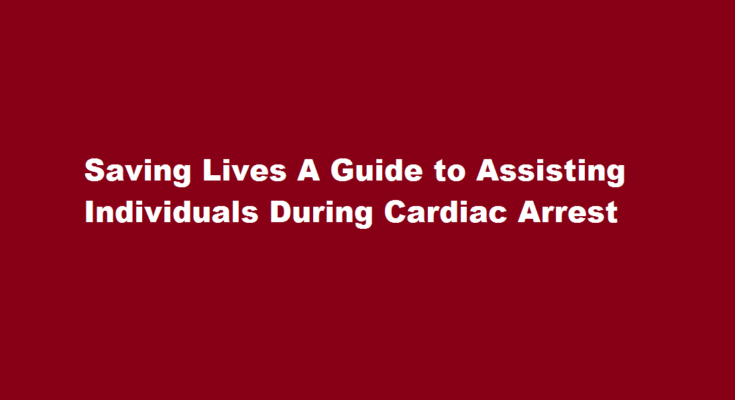Introduction
Cardiac arrest is a life-threatening condition that requires immediate action. When someone experiences cardiac arrest, their heart suddenly stops beating effectively, leading to a lack of oxygen supply to vital organs. Every second counts in such emergencies, and knowing how to respond can make a significant difference between life and death. In this article, we will provide you with essential information and step-by-step guidance on how to help a person suffering through cardiac arrest.
Recognizing Cardiac Arrest
Recognizing the signs of cardiac arrest is crucial. The person may suddenly collapse, lose consciousness, and exhibit abnormal breathing or no breathing at all. If you encounter someone who appears unresponsive and is not breathing or breathing abnormally, it is likely they are experiencing cardiac arrest.
Call for Help
The first step is to immediately call emergency services (e.g., 911) to ensure professional medical assistance arrives as quickly as possible. Provide clear and concise information about the situation, including the person’s condition and location. If there are other people nearby, ask someone to get an automated external defibrillator (AED) if available, as it can significantly increase the chances of survival.
Begin CPR
Cardiopulmonary resuscitation (CPR) is a vital procedure that helps maintain blood flow to the brain and other organs until medical professionals arrive. Follow these steps for effective CPR
- Position the person Place the individual on a firm, flat surface, such as the ground or floor.
- Hand placement Interlock your hands and position them on the center of the person’s chest, between the nipples.
- Compression technique Perform chest compressions by pushing down hard and fast (at least 2 inches deep and at a rate of 100-120 compressions per minute). Allow the chest to fully recoil between compressions.
- Rescue breaths If you are trained in CPR, combine chest compressions with rescue breaths (30 compressions followed by 2 breaths). Otherwise, focus on chest compressions alone.
- Continue CPR Continue the cycles of compressions and breaths until professional help arrives or the person shows signs of regaining consciousness.
Utilizing an Automated External Defibrillator
If an AED is available, turn it on and follow the device’s voice prompts. AEDs are designed to deliver an electric shock to restore the heart’s normal rhythm in cases of specific cardiac arrest scenarios. Attach the electrode pads to the person’s bare chest as instructed, and the AED will analyze the heart rhythm to determine if a shock is necessary. Clear the person before delivering the shock, ensuring no one is in contact with the individual or any conductive surfaces.
Frequently Asked Questions
What questions to ask after cardiac arrest?
My ejection fraction (a measure of how well the heart is working) is low. How worried do I need to be about sudden cardiac arrest? What is the chance of having a sudden cardiac arrest if a family member had one? Once you’ve had sudden cardiac arrest, what is needed to prevent another one?
What is 1 the most important intervention for a patient in cardiac arrest?
Immediate CPR is needed to treat sudden cardiac arrest and prevent death. Resetting the heart rhythm. This is called defibrillation. You can do this by using an automated external defibrillator, called an AED , if one is available.
Conclusion
Being knowledgeable and prepared to respond to cardiac arrest can save lives. Remember the critical steps: call for help, begin CPR, and utilize an AED if available. Keep in mind that CPR can help maintain blood flow, and early defibrillation significantly improves survival rates. Encourage others to learn these life-saving skills by taking CPR and basic life support courses. Rapid action is essential, as every passing minute decreases the chances of survival. By staying calm, acting swiftly, and providing immediate assistance, you can potentially be the difference between life and death for someone experiencing cardiac arrest.
Read Also : Surviving a Recession Strategies for Weathering Economic Challenges



